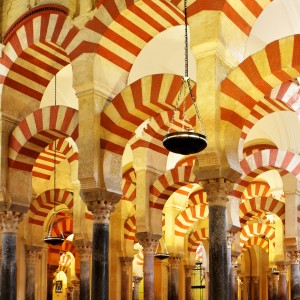The Moors of Spain
The Moors of Spain
The Moors of Spain
-
Hannah
-
Hannah
Moorish culture and legacy echoes through my new novel, Indiscretion, which is set in Andalusia, Spain, 1950, from the architecture of places that Alexandra visits to the princess costume she wears to a masked ball. Today, I take a look at the Moors of Spain, and why their influence has stood the test of time.
The Moors first came to Spain in the eight century AD when an army crossed the Strait of Gibraltar from northern Africa. The Moors, as they came to be known, conquered the country, and ruled it for some 800 years. During that time, they built a rich civilisation which shaped not only Spain as we know it today but also elements of the modern world:
- They pushed forth scientific progress in the fields of astronomy, chemistry, physics, mathematics and geography, and their philosophical tradition was strong.
- They introduced many new crops: orange, lemon, peach, apricot, fig, sugar cane, dates, ginger, pomegranate, saffron, sugar cane, cotton, silk and rice.
- Ingredients introduced by the Moors, such as saffron, apricots, artichokes, carob, sugar, aubergines, grapefruits, carrots, coriander and rice, remain popular in Spanish and Andalusian cuisine. The Spanish dish paella, for example, would not exist but for the Moorish influence.
- They pioneered public libraries. In the tenth and eleventh centuries these did not exist in any European country but Spain, which had no fewer than seventy.
- The Arabic language was absorbed into the Spanish one, so that more than 4,000 Spanish words have their origins in Arabic, such as algebra, alcohol, chemistry, nadir, alkaline, checkmate, influenza, typhoon and orange.
- While wider Europe had only two universities, the Moors established seventeen, and they extended education to all.
- The introduction of paper in Europe and of the Arabic numerals we use today has been traced back to the Moors.
- To bridge the distance between cities, they established towns and villages with interconnecting roads. Many of the alcazabas (citadels), fortalezas (fortresses) and castillos (castles) they constructed can still be seen today.
- At the pinnacle of their rule, the centre of the Moorish land in Spain (known as Al-Andalus) was the city of Córdova, and it was astonishingly modern compared to all other cities, with paved streets, pavements and streetlamps well before any other city had these, and some 900 public baths.
- While their counterparts in countries like France, England and Germany lived in draughty and gloomy dwellings, the Moors built beautiful palaces for their leaders, like the Alhambra in Granada, still celebrated today as an architectural masterpiece.
- Their influence on Spanish culture was great. One such example is in the La Mezquita (pictured). It began life as a Catholic Christian church built on the ruins of a Roman temple dedicated to Janus, but the Moors turned it into a site of worship with a Muslim and a Christian half each. The two faiths shared La Mezquita for decades, and then the Moors took over and built a vast mosque on the site. Once the Moors were ousted, it was reconverted to a Roman Catholic church – and since that time Muslims have been denied the right to worship there. A much contested site, then, but a beautiful one.
If you’re interested in learning more about the Moorish influence, here’s a link to a Channel 4 documentary entitled ‘When the Moors Ruled Europe’ which I found very illuminating: http://www.bettanyhughes.co.uk/when-the-moors-ruled-europe.
